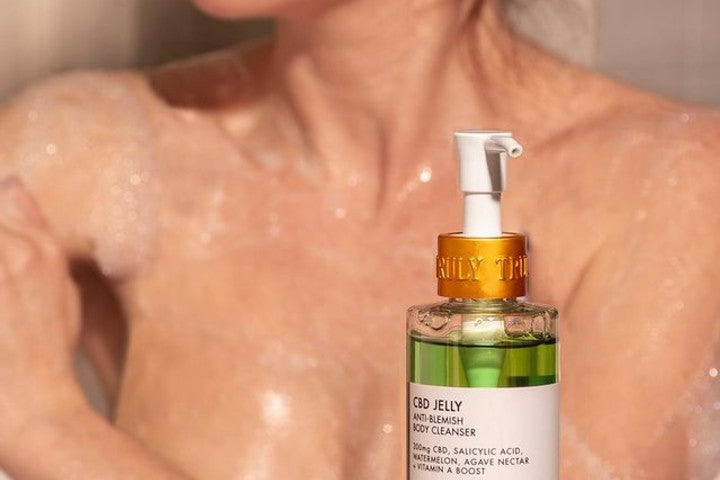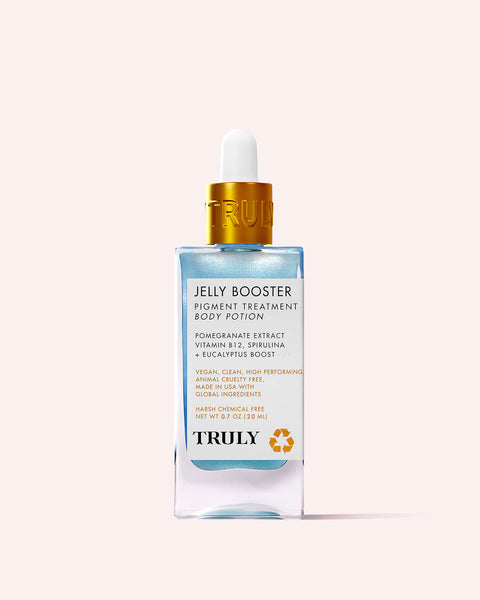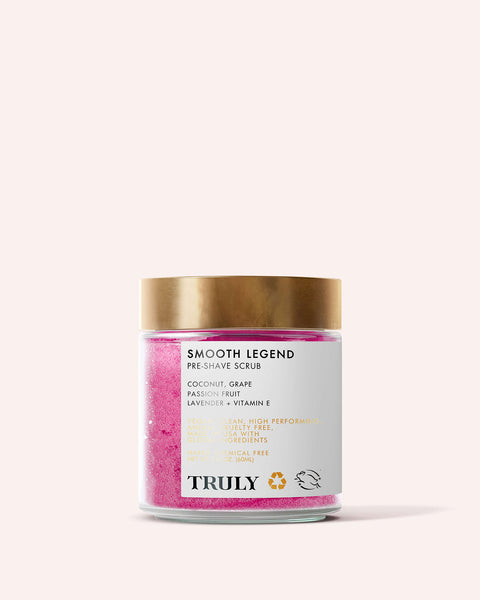Get Rid of Back Acne Scars for Good

Summer actually isn’t that far away, but you’ve still got plenty of time to prepare your back for those cute backless tops and dresses you’ve been dying to wear – if only those pesky back acne scars went away.
Bacne scars are a common complaint nowadays. So chill, you’re not the only one battling bacne’s cruel legacy.
Most importantly, how do you get rid of back acne scars for good?
Well, maybe it’s worth first getting familiar with the science behind it all before we give you the scoop on how to banish bacne scars.
WHAT IS BACNE AND WHY DOES IT HAPPEN?
Just when you thought those pimples scattered along your chin and forehead had finally disappeared, something even more terrible happens … pimples start appearing on your back.
Acne in all forms is common – it affects 85% of people in the United States. So if there’s any good news to come out of all this, it’s that you’re not alone in your plight.
Bacne, just like acne, is caused when the pores of your skin become blocked by sweat, dirt, and oil. However, because the back is particularly thick, it is even more prone to acquiring a high density of oil-producing glands, leading to blocked pores and breakouts. Other factors like hormones, genetics, heat, and tight clothing can also trigger back acne.
IT'S ALMOST AS COMMON AS FACE ACNE
While not everyone that has bacne will experience scarring, research shows 40% of people will. This scarring can range from wide to raised, pigmented to indented. It comes in many shapes and sizes.
One thing you should know: there is no quick fix.
“Whatever you do with your skin, it tends to take around six weeks to see the results because that is the length of your skin cycle,” explains Aesthetician Dr Sarah Shah at the Artistry Clinic in London. “If anyone tells you otherwise, it may be something superficial that you’re seeing but it's likely that they are not long term [results].”
Let’s take a look at how we can fade back acne scarring for good.
HOW TO HEAL BACNE SCARS
Stop Picking
First and foremost, stop picking your acne. You might get a wave of satisfaction after every picking session but believe us, it’s not worth it. In fact, picking your acne can be the whole reason scarring occurs in the first place. Not for everyone, but for the majority.
That’s because your skin is in a process of healing which causes collagen and pigment cells to become highly active. When excess pigment, aka melanin, tries to lend its helping hand, that’s when you end up with patches of discoloration on your skin. For those of you with raised acne scars, collagen on overdrive is likely responsible.
Picking won’t directly fade acne scars, but it will speed up the healing process and prevent more scars from cropping up.
Exfoliate
Exfoliation involves removing dead skin from the skin’s surface. It’s essential for maintaining healthy and glowing skin. Plus, it’s amazing at gradually lightening bacne scars and fading discoloration.
Choose Truly’s Hemp Jelly Blemish Body Cleanser. It’s formulated with hemp, salicylic acid, and vitamin A to purify the skin of dirt, grime, and oil. It also exfoliates the skin and diminishes blemishes, while soothing and calming the complexion. For best results, use daily in the shower.
Apply Anti-Pigment Serum
Serum is great at targeting specific skin concerns, including scarring and pigmentation. Every time you get out of the shower after drying yourself off, slather on several to a dozen drops of Truly’s Jelly Booster Pigment Treatment Body Potion.
It’s a lightweight solution made with pomegranate extract, spirulina, and vitamin B12 to help fade scars, discoloration, and stretchmarks.
With regular use of an anti-pigment serum, you will gradually see your bacne scars fading. However, you will need to be consistent in order to see results.
Try a Laser Treatment
Laser treatment is a favored way of tackling acne scars – whether on the face, back or chest. However, the results vary depending on the individual and their circumstances.
“When lasers are used to treat acne scars, the results can differ dramatically based on two things: how many treatments you have done, and how much social downtime you're willing to accept as part of the recovery process,” says dermatologist Heather C. Woolery-Lloyd, MD.
“Erbium laser resurfacing is also another option and it's more aggressive than Fraxel," explains dermatologist Sejal Shah, MD. “It's a minimal burning of surrounding tissues and has fewer side effects like less swelling and redness, but it won't work for those with darker skin tones.”
Consider Dermal Fillers
If your scarring is really bad and you’ve tried everything to get rid of it, there’s always dermal fillers.
“Certain scars can be filled with a substance that elevates the depressed areas, like hyaluronic acid. This can make the surface of the skin more even and get rid of shadows,” says dermatologist Dr. Whitney Bowe.
A great option is Bellafill, the first FDA-approved dermal filler that permanently corrects deep and dented acne scars.
“It's 20% polymethylmethacrylate (PMMA), which helps your body make more protein to allow itself to heal,” says Dr. Shah. “PMMA are tiny balls that sort of act as a scaffolding. Most fillers degrade over time, but since PMMA cannot be absorbed into the body, this offers a permanent result.”
The procedure takes approximately 20-30 minutes. Some people only need the one treatment, while others may need a touchup a couple of months later.
There are a number of skincare ingredients to look out for if you’re hoping to improve bacne scarring at home. Some of these ingredients include retinoids which exfoliate the skin and speed up cell turnover; vitamin C, which brightens skin and lightens scars; and lactic acid, glycolic acid, niacinamide, and kojic acid – all of which cleanse, detoxify, and exfoliate the skin. So when you look for bacne banishing skincare products, make sure you keep an eye out for these ingredients.








